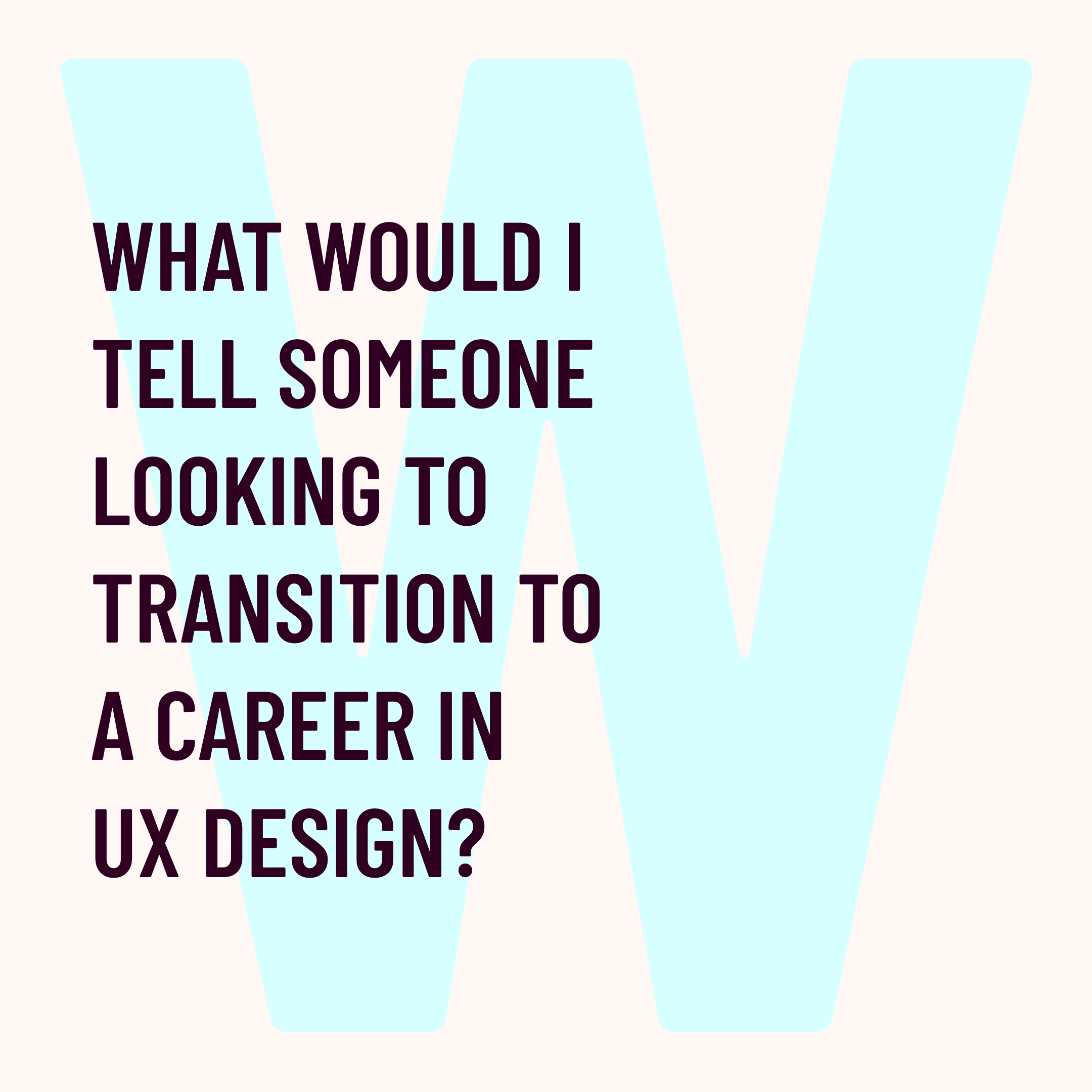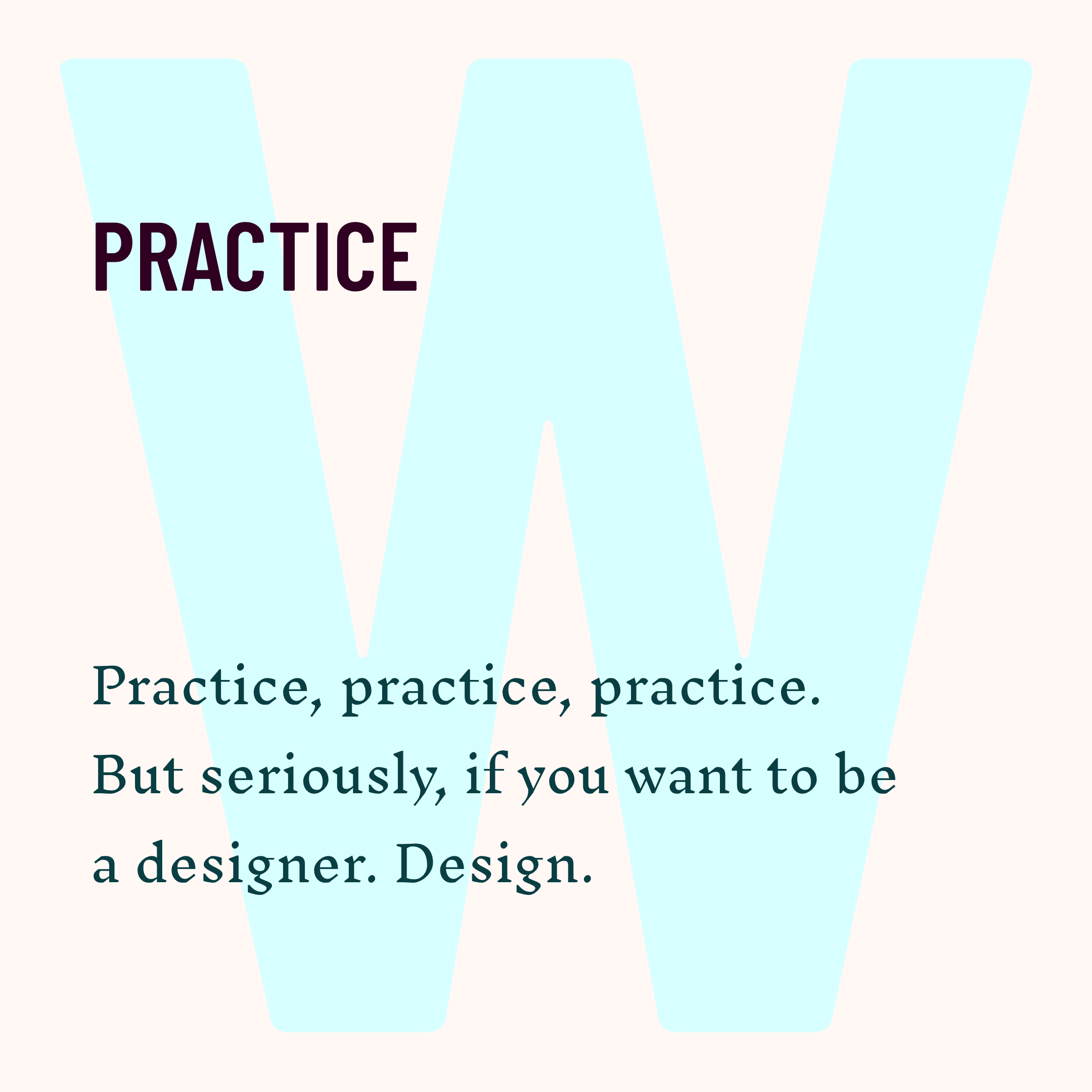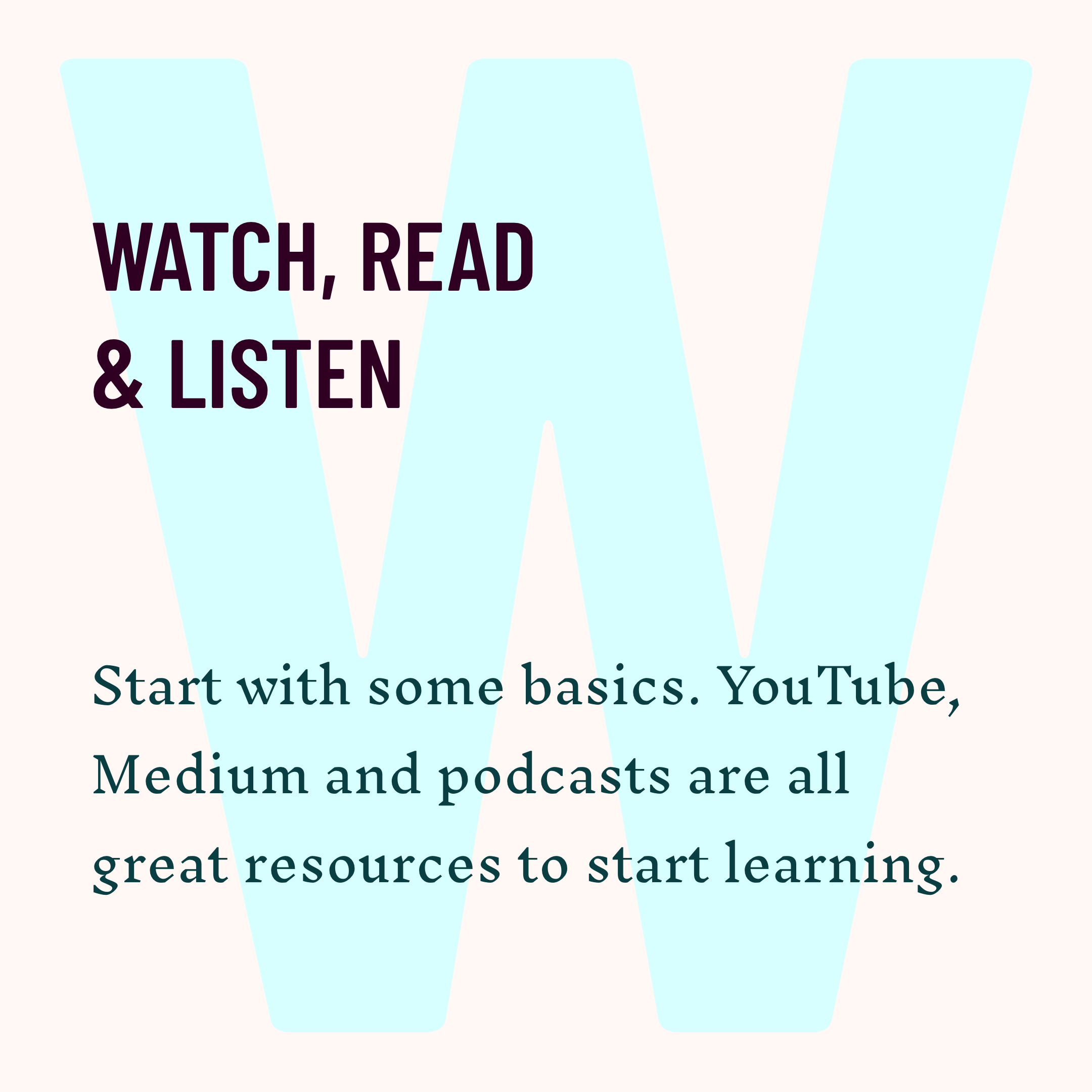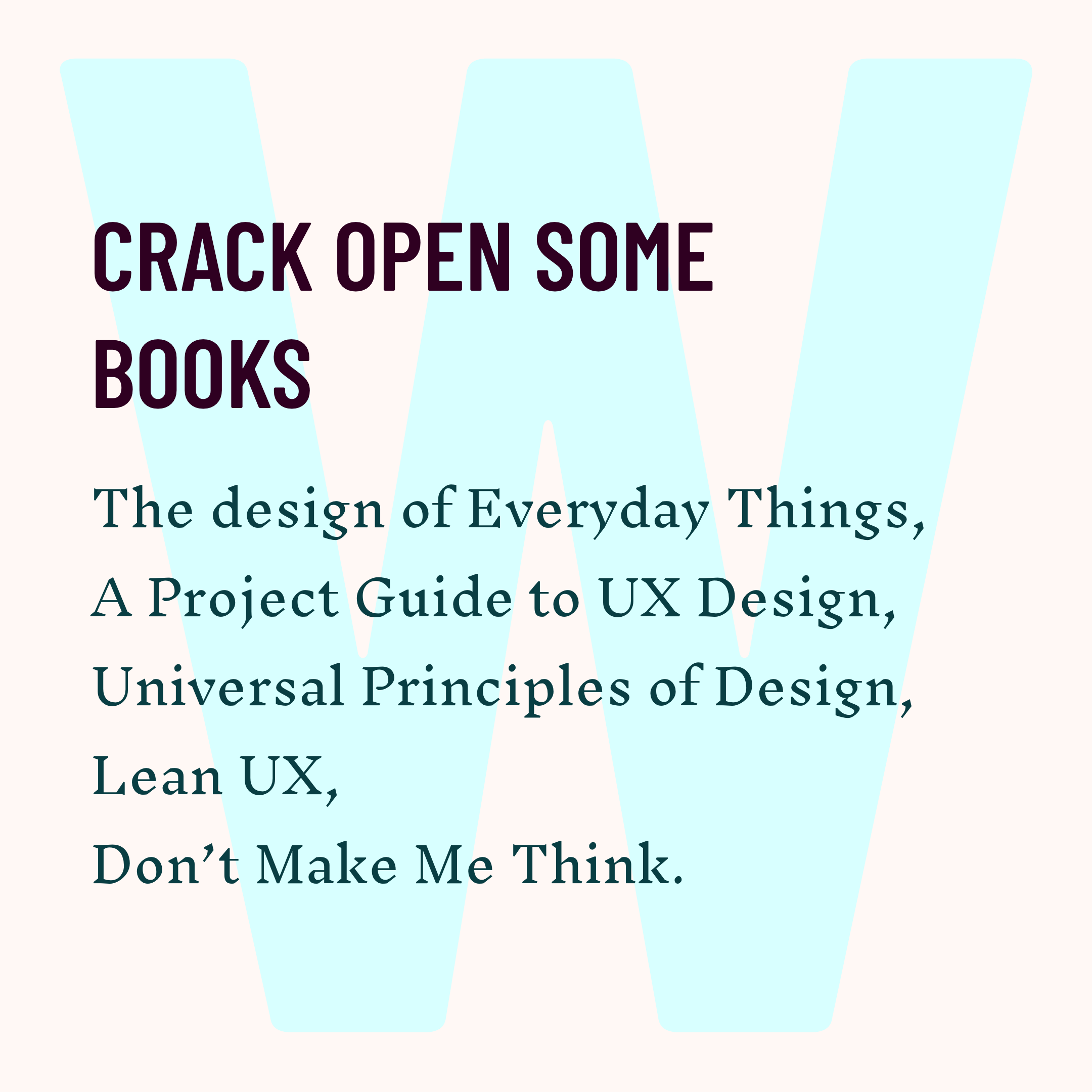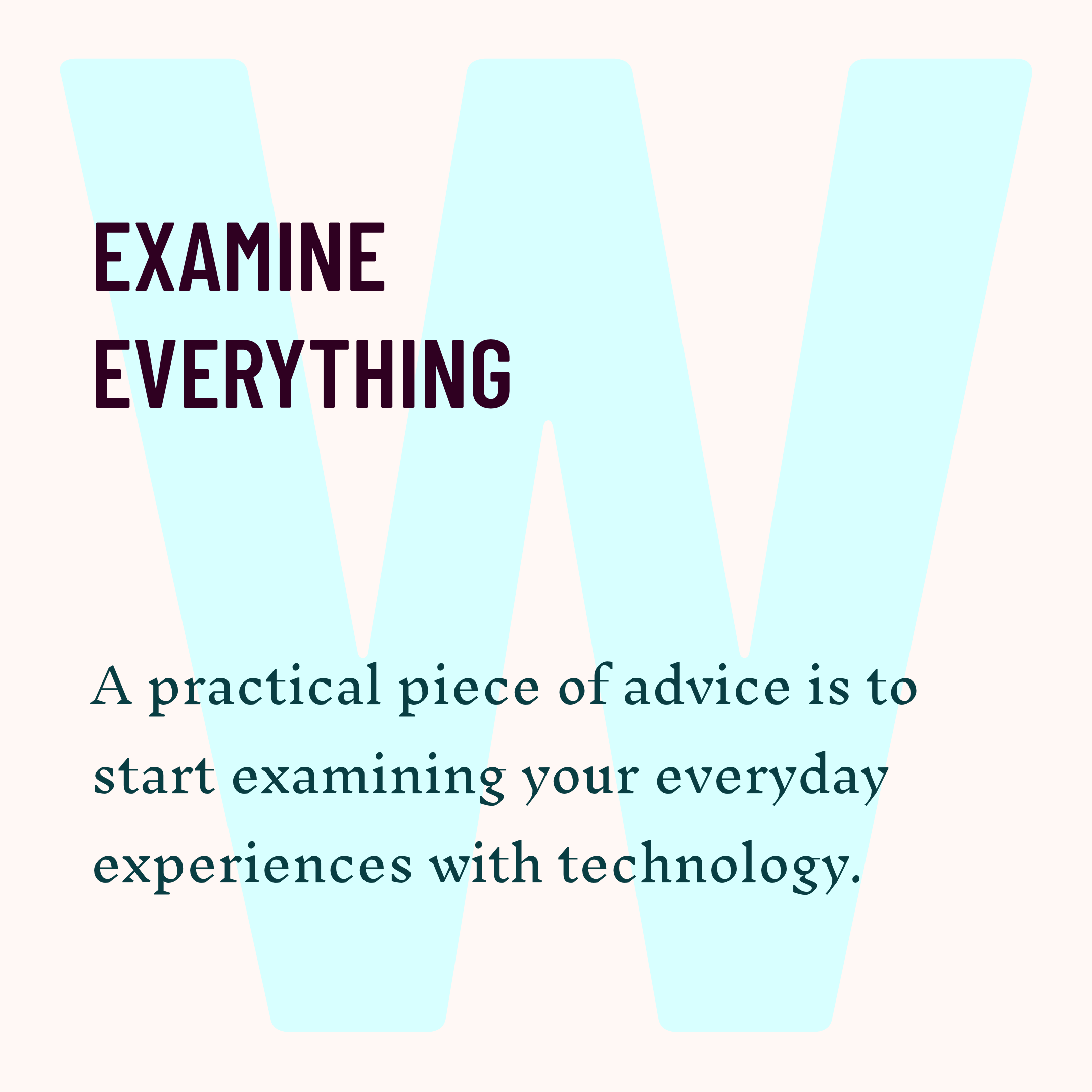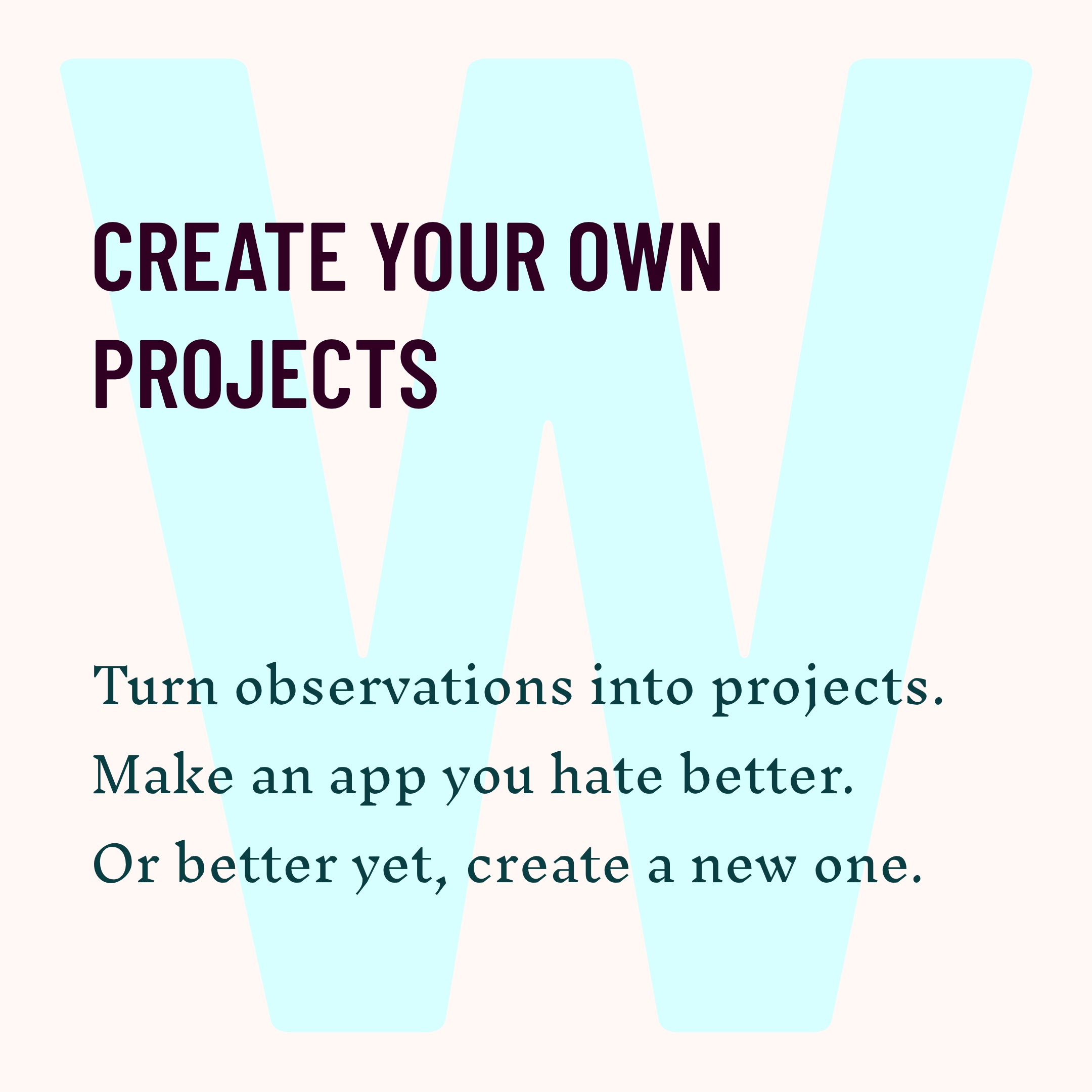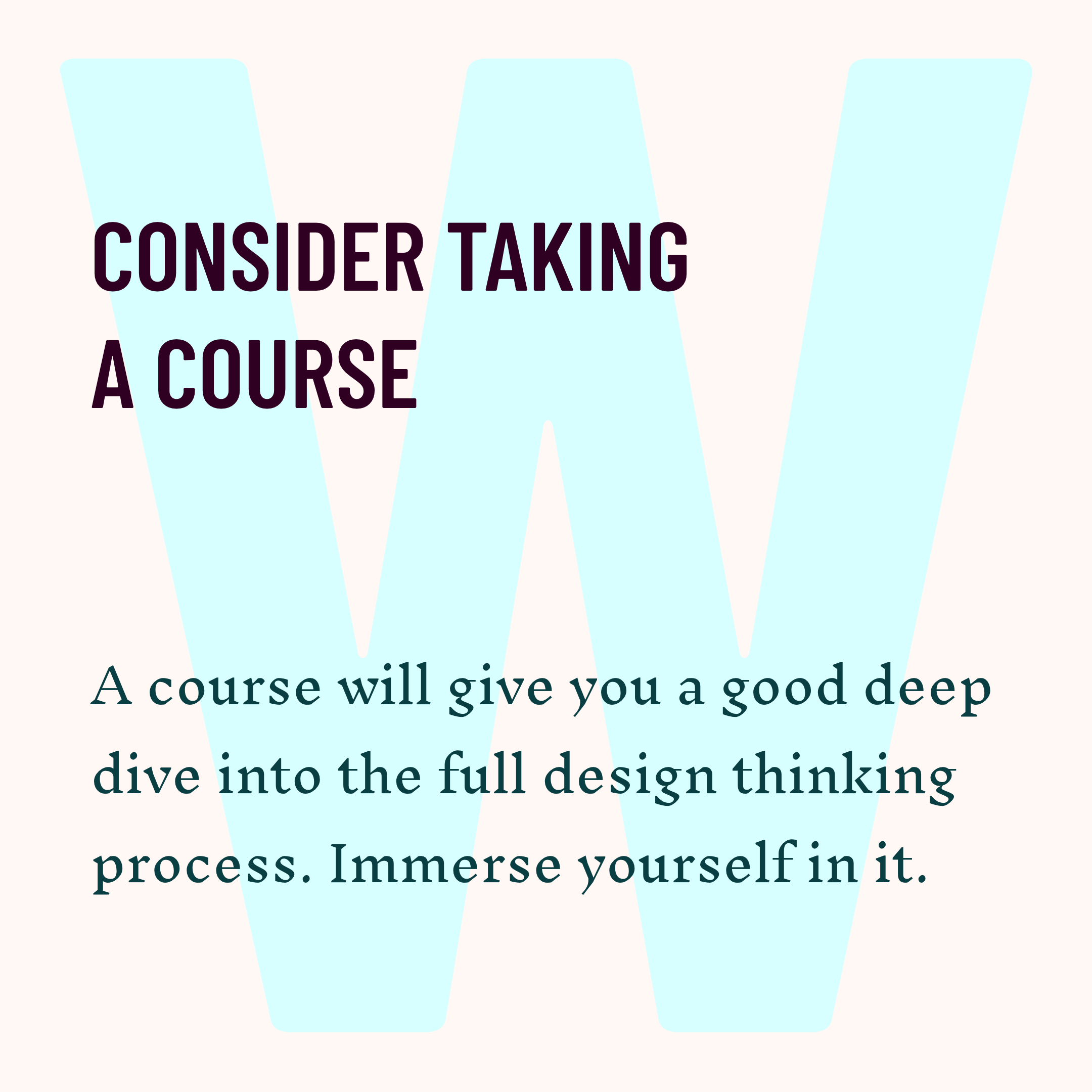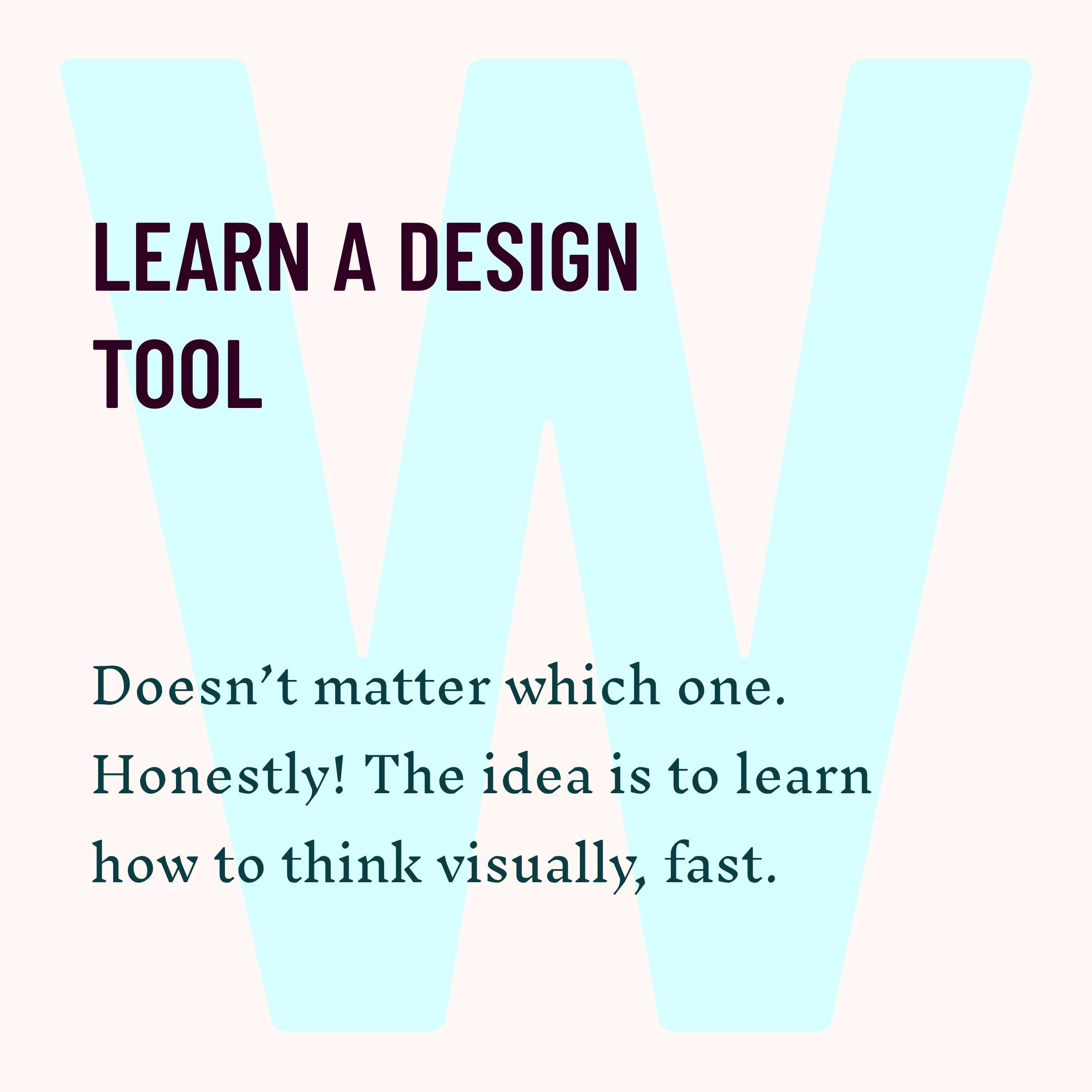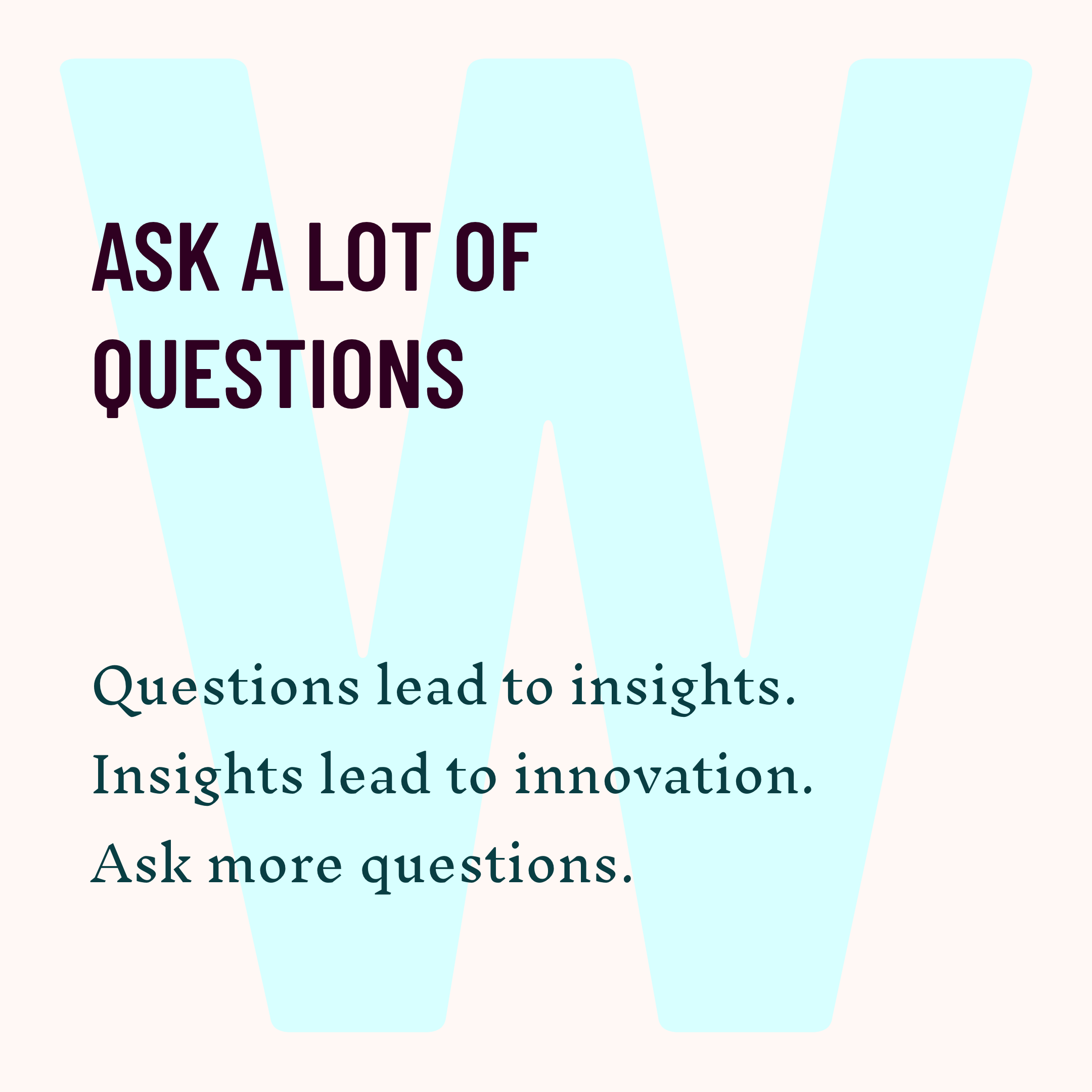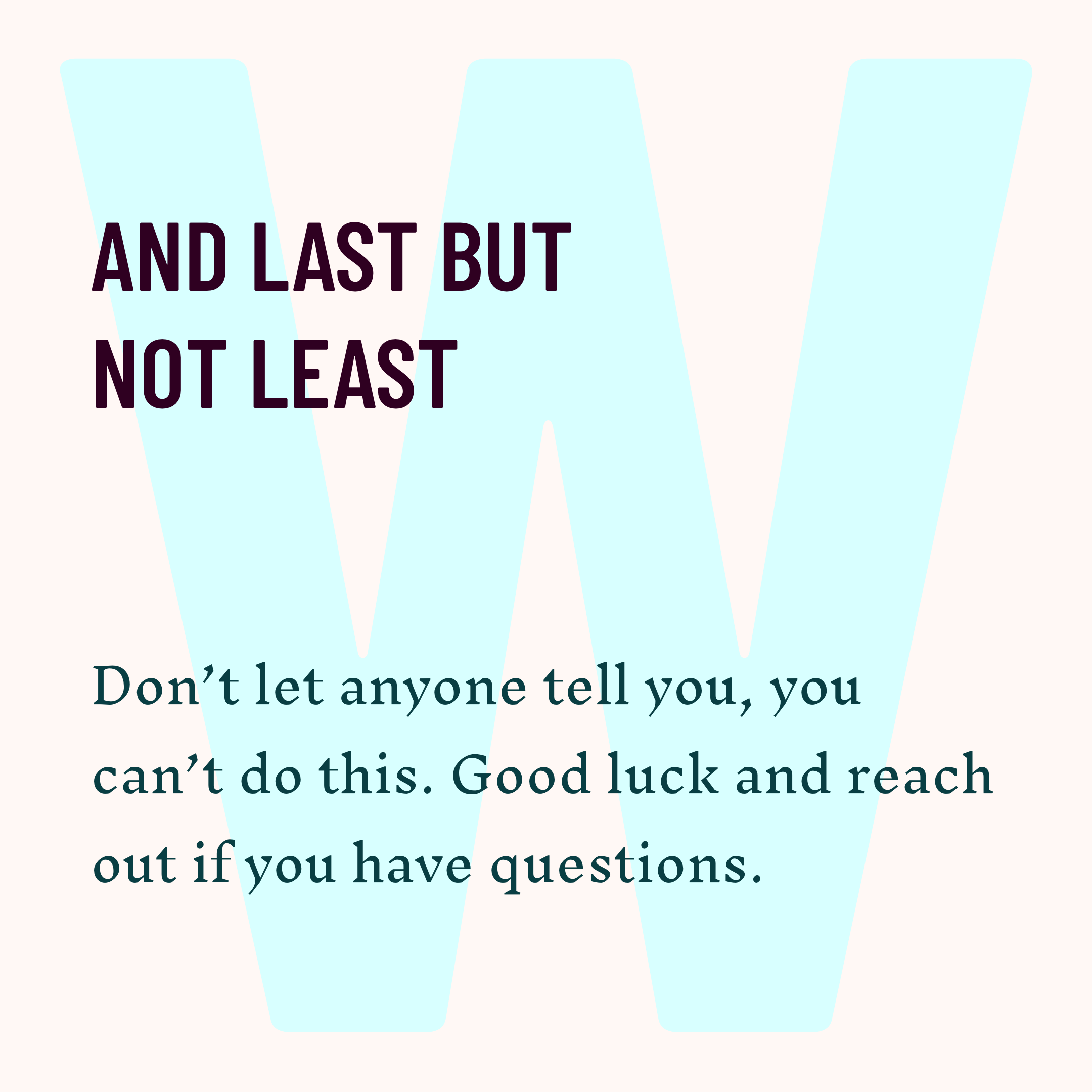Q/A: becoming a UX designer and future-proofing your career
Photo by Kelly Sikkema on Unsplash
The following questions come from a student at Kutztown University where my friend and colleague Holly Tienken is a professor. I'll read from this blogpost as well in an upcoming podcast entitled "UX Design QA: becoming a UX designer and future proofing your career".
Q: How did you transition from graphic designer/art director to Product Designer/UX?
A: I had been working on a ton of websites for my clients while at Swell Media Group, a company I formed with a friend of mine. I became really interested in user research and UX design at that time as I felt the websites we were building could get a whole lot better and using the techniques I was reading about in blogs and seeing in youtube videos. It really got me excited. I read as much as I could about UX design when the term first revealed itself to me. Obviously it had been around a while, but I always just called myself a web-designer. But when I began working on larger enterprise tools and apps and also consulting with the companies I worked with on more of a strategic level. It was obvious to me that I was doing and wanted to be doing a lot more than just "Designing websites." I wanted to help shape experiences.
Now I had formed some great relationships over the years as a designer, but was mostly known for branding and websites. A friend of mine named Eric who I had worked with in the past who is a technologist, introduced me to the company Aon. I first started working with Aon to re-skin or to put it another way improve the interactivity and user interface of a popular but dated product they had. After a good working relationship with them as a freelancer it became obvious that their product needed a whole lot more than just a re-skinning. It needed to be totally rethought. I had been talking to the team there about doing user research, design thinking sessions and they agreed. They offered me the job to be the first UX designer on that team. When I started with Aon. I was a bit nervous being that I'd only read about most of the activities that take place in a UX project. So I put myself through an Interaction Design Specialization program offered through Coursera and the UC San Diego. It was a great course and gave me the confidence to do the work without feeling like an impostor. I highly recommend this course to anyone looking to learn more.
From there on in I called myself a UX designer. Any work I took on was focused more on building digital tools that people would use and much less on building websites to sell those tools. I've been working on improving my craft ever since.
The most important aspect of my transition though was the relationships I had formed earlier in my career. When friends and colleagues from past experiences had a design need, they came to me. Didn't matter if it was graphic design or something bigger than that. I was their first option. So be good to the people you work with and know that your skills in other areas are transferrable.
Q: What does your typical day look like?
A: Well, I answered this question in detail in another blog post entitled. "A Typical Day in the Life of a UX Designer." I go into detail about this question there, but will sum it up again here. Every designer and organization is different so mileage will vary greatly. I can only talk from my experience which is as a product designer doing everything from user research, through wire-framing, prototyping, user interface design and even a little front end development for web and mobile apps. So my days are split between designing actual app screens using the program sketch.
Working through presentations and collaborative sessions with developers and business teams to align on the design of those screens. Since we are remote we us programs like InVision Freehand as our virtual whiteboard. We sketch solutions there, take notes, occasionally run design sprints there.
A lot more time is actually spent aligning the team on designs and planning for the building of those designs then is actually spent designing as to say heads down in Sketch or Figma or Adobe XD. It is a highly collaborative sport when you are working in a technology company.
The other big daily or weekly or as much as you can task is connecting with your users and that is done a few different ways. We can test our product with random users who fit our demographics through UserTesting.com which is an online testing application. I create a prototype that feels like a real app, put it up on user testing along with a script of questions and user testing will record what's happening on the screen and the thoughts a person is speaking as they work with the app.
It's a great way to see how useable your app is an if their any any major flaws. The other way we connect with our users is to invite people who actually use and pay for our apps to a zoom call with us. We'll do this to gain initial insights into what types of features they'd like to see next and also to have them test new features we're currently working on to make sure they're going to meet their needs.
So in a nutshell a typical day revolves around three things for me.
Designing. And that could be designing interfaces, user flows, information architecture, prototypes and even presentations and the occasional marketing piece.
Testing and connecting with our user base
Collaborating with the rest of the teams and disciplines that go in to making software applications.
Q: Do you see any shifts happening in the industry right now?
A: Absolutely. Lot's of shifts happening in the industry. The best is that, UX design is highly in demand. Highly in demand. I and a lot of my colleagues have recruiters and companies reach out to us almost everyday offering crazy salaries and perks to come work for them. Which is great, schools and bootcamps don't seem able to create enough graduates to fill all these roles and having good experience behind you will make you all the more desirable to prospective employers. Will this last forever. Probably not, but it's going to be a good, strong field to be a part of. The world is becoming increasingly digital and the pandemic is only making that move to digital even faster. This new world will need designers to shape it.
Another thing is that design now has a seat at the table. For a long time designers were looked past or as just someone to make something look pretty. Business now knows that their experience makes or breaks a product and designers should be involved in helping to shape every aspect of that experience. The problem now is what we do now that we have that seat. Design holds leadership roles and if we want to continue to be taken seriously, we need to take our responsibility seriously. There is a quote I love from Beth Comstock that says "What business needs now is design. What design needs now is making it about business".
What else? New technologies. Artificial intelligence, Augmented Reality, Machine Learning, Virtual Reality, Blockchain will all be things designers will need to touch and shape. We need to learn these technologies so we can help companies implement them in ethical and aesthetic ways. There is a fantastic passage from a book called "The future of Design" which I received from the author Lorraine Justice. I'll read the excerpt here:
"The role of the design in the future could become similar to that of a curator, conductor, film director or operations specialist, depending on the product or service. Interior designers, product designers, and user interface designer have skills today that are directly transferrable to building virtual environments."
… "In Rob Girling's article "AI and the future of design: What will the designer of 2025 look like?" he says that "designers may well provide the missing link between AI and humanity" Designers may go into various specializations such as virtual environments. He says that "the designer's role will be to set the goals, parameters, and constraints, and then review and fine-tune the AI-generated designs." Girling does not believe that design jobs will go away, but they may change. There will be an opportunity to design AI environments and user interactions, but first designers need to help create the emerging AI tools and systems they will be using. In the future, there will likely be a melding of work methods as cultures around the world adopt and adapt team management practices. Accepting and embracing continual change may become the most valued skill of all.
Again, that is an excerpt from the book "The Future of Design" by Lorraine Justice published in 2019 and in that passage she is quoting Rob Girling from an article he wrote entitled "AI and the future of design: What will the designer of 2025 look like" published on the Oreilly ideas blog back in 2017.
New technologies will be the disruptors, so developing a learning mentality will help designers adapt with the new technology and not turn away in fear from it.
With all that new technology. Mobile in my mind is still a big thing. As much as all these new technologies will eventually take over. The majority of companies still don't even have any type of mobile strategy. Most of the world still lives in a design for desktop first mentality. Apps and the mobile web are still going to be a huge part of design strategy over the next ten years and also breaking outside of the native apps for iOS, Android and into progressive web apps that can be accessed anywhere.
The role of the designer is also changing. Reading through the job boards, descriptions and also being on the hiring side. Product designer seems to be the preferred role companies are looking to fill these days.
I see all this stuff online about UX is NOT UI and vice versa and technically that is correct, but these roles blend together and companies are looking for people who can craft, spin and tell digital stories. That involves knowing how to create a great structure and also knowing how to make it look good, and obvious and interactive. User Experience is NOT the User Interface, but without a UI, there is NO experience if what we're talking about a digital product.
There will always be a market for someone who specializes in say "Visual Design" and someone who wants to specialize is say "Research", there is just going to be a much larger market for those T-Shaped designers who can do the whole spectrum of Product design. From Strategy to working prototypes of beautiful, interactive experiences.
Remote work is the way of the future. Peoples time shouldn't be wasted traveling to offices through traffic and pollution in order to sit in a cubicle and be on zoom meetings with people in different locations. It's absolutely ridiculous. Offices and meet spaces should be all about people collaborating on an as needed basis to solve problems together. But being together just to be together while you neglect your family and life is in the past and should stay there.
Q: How did you manage to work as a designer abroad in London?
A: First I was lucky. A friend on my oldest sister had moved to London and married an Englishman named Eddie who owned a design firm specializing in packaging and advertising for video games. He happened to be visiting the US during the holidays with her. He found out I was taking graphic design courses at school. He offered to take a look at my portfolio and promptly told me I wasn't learning anything in school and that I should come and do an internship for him in London. Which I took him up on. It was the chance of a lifetime and I got to work on some pretty cool stuff that summer. It went well and some of my work there was used in real campaigns.
The next part was persistence. I kept in touch and upon graduating phoned Eddie more than a few times to ask if I could come back and work for them again. It happened that they had a designer resign just recently and If I could make it there by the end of the month I'd have a job and so I got together the visa, sold my car, and off I went. I was there for a little over two years and it was really the experience of a lifetime.
Q: What advice would you give to someone looking to start working in UX/UI/Product Design?
A: I actually wrote an article already about this question which I'll link. That article was aptly called "What would I tell someone looking to transition to a career in UX Design?"
That article has a lot of links in it which may be helpful, but if you don’t want to read through that all of that I’ll sum it up in the below images.
